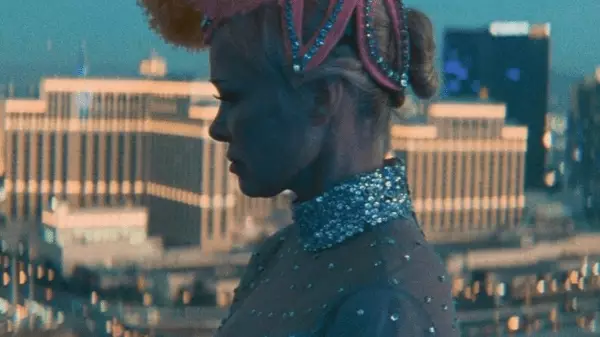The entertainment world often witnesses reinventions, but few are as anticipated as Pamela Anderson’s return to the screen. Known primarily for her iconic roles and public persona, Anderson’s latest project, *The Last Showgirl*, draws inspiration from the transformative journey she represents. Under the direction of Gia Coppola, the film explores the nuanced intersections of age, identity, and the challenges women face in the entertainment industry. Set to premiere on December 13, this film marks a significant moment for Anderson and offers a platform for her to delve into deeper emotional narratives.
Gia Coppola, drawing parallels between Anderson and the legendary Marilyn Monroe, crafted *The Last Showgirl* with a vision of bridging the past with the present. Coppola emphasizes that figures like Anderson and Monroe embody a unique intersection of glamour and struggle. After being inspired by Anderson’s Netflix documentary, *Pamela, a Love Story*, Coppola sought to capture the essence of these complex women. For Coppola, the character of Shelley serves as a resonant figure who, despite her outward success, grapples with internal conflicts. The juxtaposition of Anderson’s and Monroe’s journeys illustrates the societal pressures placed upon women in the entertainment industry, an aspect that resonates deeply in the current cultural landscape.
In her portrayal of Shelley, Anderson faces personal crossroads while wrestling with the implications of aging and relevance in a youth-driven industry. This character’s struggle to maintain relationships, particularly with her daughter Hannah, portrayed by Billie Lourd, underscores the enduring challenges of motherhood in a relentless profession. Anderson expresses her connection to Shelley, reflecting on how most of her career has emphasized superficial qualities rather than the deeper, multifaceted person she is. This notion appeals to contemporary audiences, who increasingly seek authenticity and vulnerability in storytelling.
Coppola’s observation of Anderson as “the Marilyn of our time” elevates this role from mere performance to a nuanced exploration of self-expression. Anderson’s intelligence and artistic inclination inform Shelley’s character, revealing a woman eager to express her talents beyond the aesthetic expectations placed on her. This hunger for creative expression invites viewers to reconsider the dimensions of celebrity and the rich narratives that often go untold.
As *The Last Showgirl* approaches its release, the film stands as a cultural commentary on the evolving narrative of women in the entertainment business. Anderson’s portrayal reflects both personal and universal themes of reinvention, motherhood, and the pursuit of authenticity in a superficial world. In bridging the concepts of past and present, the film invites audiences to reflect on the roles of the women who shaped and continue to shape the industry. Through this lens, Pamela Anderson emerges not just as an icon, but as a complex individual ready to redefine her legacy.

